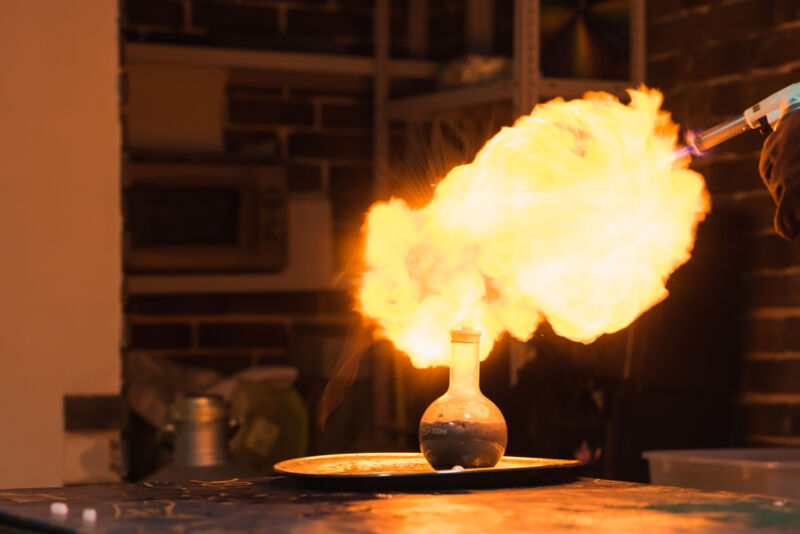Fractal flaming hydrogen wiggles through tiny gaps

Enlarge / Lab technician setting fire to a ball with hydrogen blowtorch. (credit: JohnAlexandr | Getty Images)
Hydrogen is not your friend. This was the first lesson I learned when I sent a PhD student off to study hydrogen reactions on a surface. Hydrogen is explosive over a huge range of concentrations, making even the tiniest leak an invitation to study the joys of high-velocity stainless steel, with an added bonus of third-degree burns. I've now learned that the situation is actually worse than I thought, because hydrogen is also able to burn in very confined spaces as well.
Fire needs three things: fuel, oxygen, and heat. If you have a well-mixed fuel-oxygen combination, the first two aren't going to be a problem, so you just need to add heat. When ignition is sparked off, the fuel and oxygen are quickly exhausted locally, so a front of combustion will expand outward from the ignition point, consuming the fuel and oxygen as it goes. For that expansion to take place, the heat generated from combustion must be transferred outward with the flame front, otherwise the gas will not be hot enough to ignite.
In a large space, this is not a problem, because gases don't take much energy to heat up. In a confined space, though, the walls start to play a role. Energy will go into heating the walls, but the wall temperature may never get above the ignition temperature of the gas. So, if the walls are close enough, a spark will not result in a propagating flame front; instead, the flame dies locally. For hydrogen, though, the story turns out to be a bit more complicated.
Read 8 remaining paragraphs | Comments